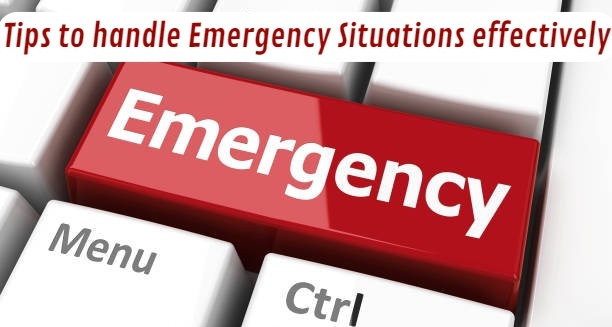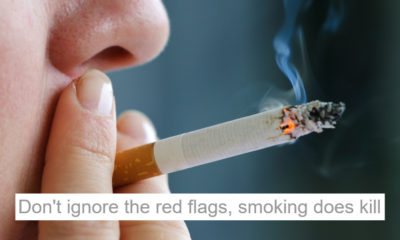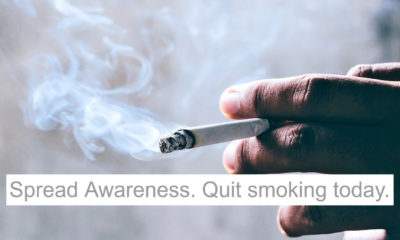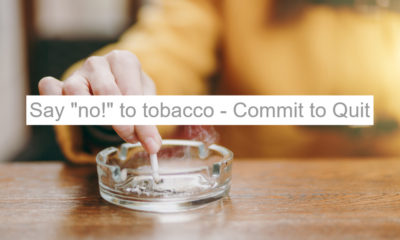Medical & Pharma
Tips to handle emergency situations effectively

Emergency situations often come without any warning and most of us are unprepared or unsure about handling them.
Grasping the situation quickly and responding to it in time in the right way is crucial to managing emergency situations. Therefore, knowing the basic tips is always handy and help in saving lives.
In one such case, Abdul, 54 years old received timely first aid treatment at home which saved him from suffering severe damage by stroke. Abdul’s daughter Fatima who had attended the workshop on “recognising stroke and act FAST” was able to recognise the ailment in her father in time and take him to the hospital in the golden hour. One night while going to get water from the kitchen, Fatima noticed her father standing still near the dining table. She went near him to ask if he needed something.
But Fatima could not understand what her father was saying. She also noticed that he was finding it difficult to stand erect. Worried about Abdul’s condition, Fatima made him sit and called her husband for help. Both of them immediately called the ambulance. Meanwhile, Fatima remembered the tips from the workshop she had attended about stroke and just to clarify her doubt, she asked her father to smile which Abdul found difficult. While asked to lift both of his hands, one of his arms started drifting down. Realizing the emergency, Fatima called us and followed our instructions. Her immediate actions helped in getting Abdul to the hospital without much damage to his brain.
Fatima’s presence of mind helped in her father getting timely treatment. Similarly, getting to know about the emergency conditions which can arise at the home, office or even on-road and responding to it in the right way always helps to reduce the impact of the condition.
It is not only severe conditions like stroke, cardiac problem need immediate attention. Health problems like fever, fractures also require good management at home. Especially when there are children at home learning the management tips in an emergency can enable one to manage the situation better.
Similar was the case of Arpit, a 3-year-old baby who was rushed to the hospital after a fall from the stairs. Arpit was playing with the ball at home and stepped out to pick it up when it went outside the house. Although, his father followed him outside the house, Arpit while trying to catch the ball fell from the flight of stairs. Arpitinjured his knee which started bleeding.
When his father tried to lift him and make him stand erect, Arpit could not move his leg and started to scream in pain. As Arpit’s father had earlier researched and learnt a bit about handling the emergency situations at home with kids, he immediately cleaned the wound and tied a clean cloth to stop bleeding and also started applying an ice pack to the knee area. Without moving Arpit’s leg much, his father got him to the hospital. During the X-ray examination of his leg, it was noticed that there was a hairline fracture. The first aid provided by his father helped in reducing the impact of the fall which could have easily escalated to a more serious injury.
Listed below are the few tips to handle emergency situations like cardiac emergency, stroke, seizure, fractures, fever and dehydration.
Cardiac emergency:
Dos
- Firstly, help the victim sit in a support position with their knees bent
- Immediately call emergency services
- If the victim is conscious and is not allergic to Aspirin, give them a 300mg tablet of Aspirin to chew
- Monitor the condition of the victim
- In case the patient loses consciousness, start chest compression if you have completed BLS training
Don’ts
- Make sure you do not let the patient go out of your sight
- Do not wait for the symptoms to become more manageable
- Do not give the victim anything to ingest by mouth since they may choke
Stroke:
Dos
- Access patient using FAST- facial deviation/arm drift/slurred speech
- Call for medical help immediately
- Reassure the patient
- Lay the patient down with shoulders and head slightly elevated
- Place the patient on their left side in case breathing is shallow.
Don’ts
- Make sure that you do not give them anything to eat or drink
- Avoid any movements by the patient
- Do not try to lift a patient if there is a suspected injury to the back or neck in the absence of a medical professional
In the case of stroke, quick stroke treatment can save lives. It is important that the patient gets medical attention right away.
Seizure
Dos
- Roll the victim on to their side to keep airways clear
- Clear any sharp or hard objects from the vicinity in order to avoid injury from a violent seizure
- In case the clothes are tight, loosen them around the neck
- Put a small pillow or a rolled-up jacket under the head to provide padding
Don’ts
- Do not give the victim anything to eat or drink
- Do not try to hold the patient down or restrain them, this can result in injury to them as well as you
Fractures
Dos
Broken Arm
- Ask the victim to support the injured arm with the other hand
- Make sure to immobilize the injured joint
- Place ice on the break to reduce swelling
- Monitor pulse in the arm or forearm
Broken Leg
- Help the victim lie down and support the leg at ankle and knee joints by hand or on a chair
- Steady the injured leg with padding
- Place rolled-up blankets outside the injured limb and between legs to work as splints
Don’ts
- Do not try to move or straighten a broken limb or change its position as this can cause further damage to nerves, blood vessels and soft tissues
- Do not allow the patient to put pressure on the injured limb directly or indirectly
Fever and Dehydration
Dos
- Observe for 48 hours and if the fever does not go down, take the patient to the doctor since certain tests maybe required
- Please ensure the patient has plenty of fluids
- Make sure that there is cross ventilation in the room
For emergencies like:
- Road accidents
- Sharp cuts and burns
- Swallowing of objects(in children)
- Pushing an object into the ear or nose (in children)
It is recommended to not wait and the patient has to be taken to the hospital immediately
Quite often during emergency situations, we make decisions while in a state of panic and later regret it as we find out that our actions may have done more damage than good. This happens as many of us are not adequately trained to deal with emergency situations. Though emergency situations demand rapid action, we should not forget that the wrong decisions or actions can be fatal for the people involved. When we are aware of what to do when faced with an emergency situation, it can make a lot of difference in saving lives!
For emergency helpline numbers, please visit – https://indianhelpline.com/
By Dr. Saurav Das, Consultant – Emergency Medicine, Columbia Asia Hospital Sarjapur Road









































